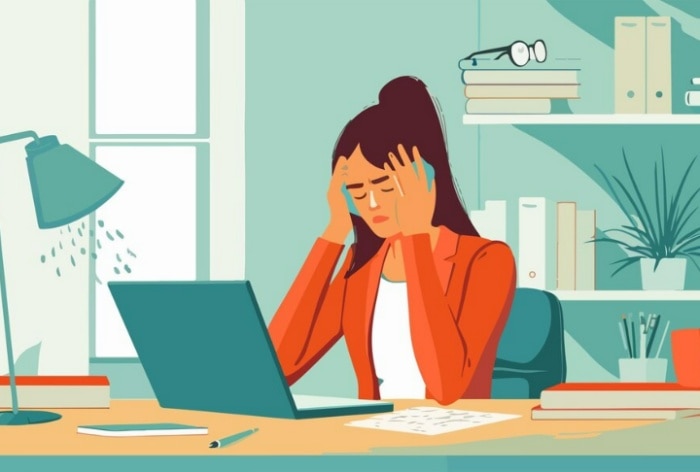Following the death of a 16-year-old employee due to workplace stress, a conversation has suddenly emerged about the importance of mental health in the workplace. Here’s how to identify burnout syndrome.
Mental health basically refers to a healthy state of mind. Good mental health and mental well-being can help lead a better lifestyle. The recent death of a 26-year-old, allegedly due to work-related stress, has suddenly started a conversation about mental health in the workplace. While this is something that should have been a part of fitness conversations earlier, it is at least gaining some space now. What employees often experience is burnout. Burnout is a state of emotional, physical, and mental exhaustion caused by prolonged stress, often work-related. It can significantly impact productivity, job satisfaction, and overall well-being. Recognizing the signs of burnout and implementing strategies to manage mental health in the workplace are essential to maintaining a healthy work environment.
How to identify burnout syndrome in the office
- Physical symptoms: Burnout can manifest itself physically through chronic fatigue, headaches, or sleep disturbances. If you feel exhausted despite resting, it could be a symptom of burnout.
- Emotional exhaustion: Feelings of hopelessness, cynicism, or irritability are common indicators. If you frequently feel overwhelmed by tasks or disconnected from your work, it’s crucial to take note.
- Decreased performance: A noticeable decrease in productivity, creativity and motivation can be a sign of burnout. If tasks you once enjoyed are now becoming a chore, it may be time to reevaluate your workload.
- Isolation:Isolating yourself from colleagues or feeling disconnected from the team can be a symptom of burnout. Social support is vital; if you find yourself avoiding interactions, that’s a red flag.
- Increased sensitivity: Heightened emotional responses, such as frustration or anger over minor issues, may indicate that you are approaching burnout.
Managing mental health in the workplace
- Set boundaries: Set clear boundaries between work and personal life. Avoid taking work home with you and designate specific times to disconnect from emails and notifications. This separation can help you recharge your mental energy.
- Prioritize self-care: Incorporate self-care practices into your daily routine. This can include regular physical activity, mindfulness exercises or meditation, and ensuring adequate sleep. Taking time for yourself is critical to mental resilience.
- Actions: Talk openly about your feelings and workload with your supervisors or colleagues. Sharing your concerns can lead to solutions, such as redistributing tasks or adjusting deadlines, which can relieve stress.
- Take breaks: Regular breaks during the workday can prevent burnout. Step away from your desk, take a short walk, or do a short relaxation exercise. These moments of rest can improve concentration and productivity.
- Seek professional help: If feelings of burnout persist, consider seeking support from a mental health professional. Therapy or counseling can provide coping strategies and tools to effectively manage stress.
Recognizing burnout and prioritizing mental health in the workplace is essential for both individual well-being and the overall health of the organization. By identifying signs of burnout and implementing strategies like setting boundaries, prioritizing self-care, and maintaining open communication, employees can foster a healthier work environment. Remember that managing mental health is an ongoing process that requires attention and care. Taking proactive steps can lead to a more fulfilling and productive work experience.
